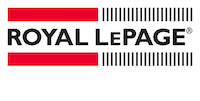Investing in real estate is as much an art as it is a science. While market data and research are critical, savvy investors often trust their instincts and pay attention to subtle cultural shifts that can signal a neighbourhood is on the rise. Spotting an up-and-coming neighbourhood before it becomes the next hotspot can lead to significant returns, but how do you know where to look? From market indicators to cultural clues, here’s how to find the next great investment opportunity in Canada.
Start with the Data, But Don’t Stop There
The first step in identifying an up-and-coming neighbourhood is to look at the numbers. Review trends like home prices, rental rates, and population growth. Areas where property values are steadily rising but haven’t yet skyrocketed may be on the verge of a boom. In Canada, cities like Hamilton, Ontario, and Calgary, Alberta, have seen significant appreciation in property values as they attract new residents priced out of Toronto or Vancouver.
Transit infrastructure is another strong indicator. Keep an eye on neighbourhoods near planned subway extensions, new bus routes, or major highway projects. The Eglinton Crosstown in Toronto, for instance, has already spurred interest in previously overlooked areas along its route, such as Mount Dennis and Caledonia. Improved transit options can make a neighbourhood far more appealing to commuters, driving demand and property values.
Follow the Fringe
Some of the most transformative neighbourhood shifts often begin on the margins, with communities that are historically underrepresented or overlooked leading the way. Progressive liberal communities, such as LGBTQ+, have frequently played a pivotal role in revitalizing areas. Seeking affordability and spaces where they can express creativity and build inclusive networks, these communities often move into undervalued neighbourhoods, infusing them with energy, culture, and a sense of belonging. This dynamic has turned areas like Vancouver’s Commercial Drive or Toronto’s Queen’s West Village into thriving hubs that attract broader interest.
Urban pioneering by marginalized communities is part of a broader phenomenon where “fringe” communities—artists, young professionals, and other culturally pioneering groups—bring new life to neglected spaces. They open independent cafes, vintage shops, and art galleries, drawing attention to areas that were once dismissed. These communities lay the groundwork for revitalization, creating vibrant cultural hubs that often become desirable destinations for a wider demographic.
To identify a neighbourhood with this potential, look for signs of this fringe activity. Are independent businesses popping up? Do you see murals, street performances, or informal community events? These are often the first markers of a neighbourhood on the cusp of transformation. While data and development projects offer one way to predict growth, keeping an eye on cultural pioneers can reveal opportunities others might overlook.
Look for Signs of Change
Beyond data and demographics, physical signs of change in a neighbourhood can signal its potential. Take a walk or drive through the area and notice what’s happening on the ground. Are older buildings being renovated? Are there cranes on the skyline? A wave of new construction or investment in infrastructure can indicate that developers see promise in the area.
Community-led projects like urban gardens, public art installations, or farmers’ markets can also be telling. These initiatives often reflect a growing sense of pride and engagement among residents, which can attract further development and investment.
Trust Your Intuition and Hunches
While hard data is crucial, don’t underestimate the power of intuition. Sometimes, a gut feeling about a place can lead to great opportunities. If a neighbourhood feels alive with energy, if you see people out enjoying public spaces or chatting in front of their homes, it’s likely a community that’s thriving. Trust your instincts when a place feels like it’s on the cusp of something special.
For example, many investors took a chance on Ottawa’s Hintonburg neighbourhood years ago, drawn by its mix of affordability and charm despite its rough edges. Today, it’s one of the city’s most desirable areas, with bustling restaurants, shops, and a strong sense of community.
Follow the Coffee
A surprising but reliable indicator of an up-and-coming neighbourhood is the arrival of boutique coffee shops. Chains like Starbucks often have detailed research teams scouting for locations that fit the profile of a growing area. When independent cafes start appearing alongside these big players, it’s often a sign that young professionals and cultural creatives are moving in. Areas like The Junction in Toronto and the Brewery District in Edmonton have seen this pattern play out successfully.
Keep an Eye on Policy and Local Initiatives
Government policies and municipal initiatives can also signal growth. Look for areas where local governments are investing in revitalization projects, offering grants for first-time homebuyers, or supporting commercial development. For example, Winnipeg’s Exchange District benefited from heritage building preservation programs that spurred a wave of redevelopment.
Conclusion
Spotting an up-and-coming neighbourhood requires a balance of data analysis, cultural awareness, and personal intuition. From tracking infrastructure projects to noticing the arrival of new businesses and creative communities, these clues can guide you to promising investment opportunities. By combining research with a keen sense of cultural dynamics—like the time-tested adage of “following the gays”—you can get ahead of the curve and capitalize on the next big thing in Canadian real estate.





